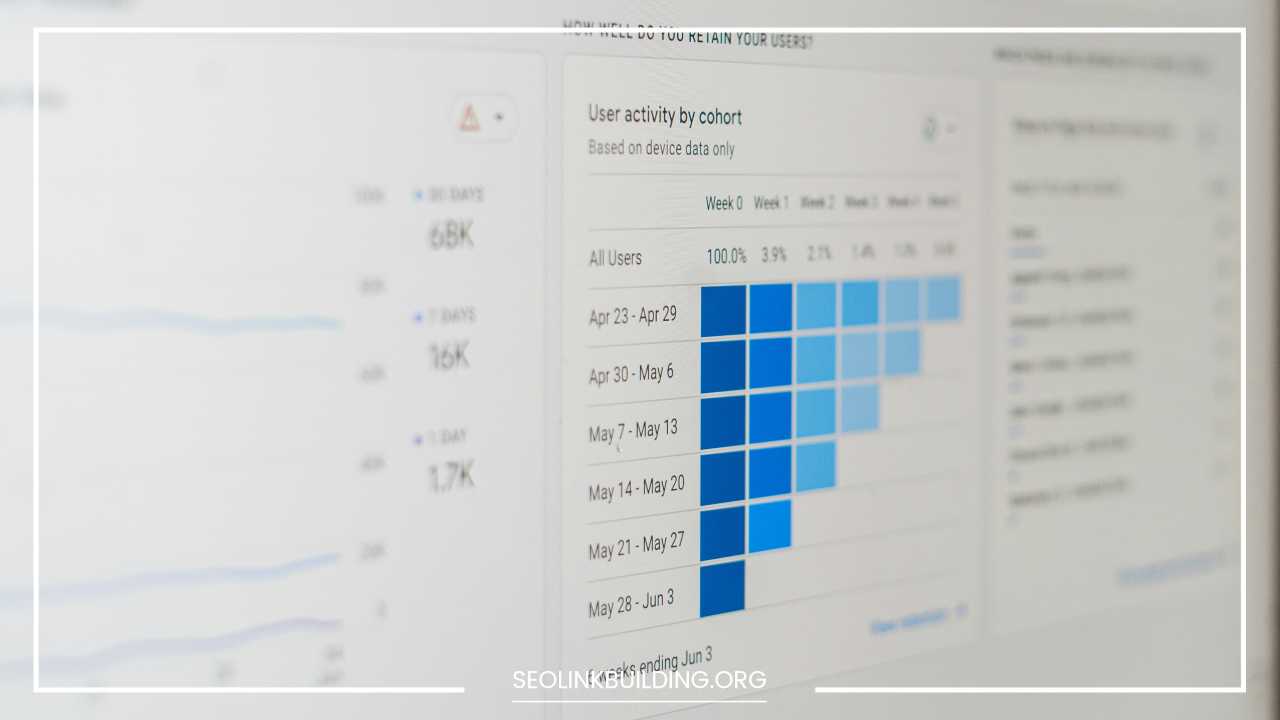SEO Analytics: How to Analyze SEO Analytics for Better Rankings

SEO Analytics
Mastering SEO Analytics: Unlock Better Rankings and Boost Organic Traffic
Search Engine Optimization (SEO) is a cornerstone of digital marketing, essential for enhancing a website’s visibility and ranking in search engine results pages (SERPs).
A robust understanding of SEO analytics enables businesses to make informed decisions, optimize their strategies, and ultimately drive more organic traffic.
This comprehensive guide delves into the intricacies of SEO analytics, detailing how to analyze key metrics for better rankings.
Understanding Key SEO Analytics Metrics
Before we dive into analysis techniques, it’s crucial to familiarize ourselves with essential SEO analytics metrics.
These metrics provide the foundation for your SEO strategy, helping you gauge the effectiveness of your efforts and identify areas for improvement.
1. Organic Traffic
Organic traffic refers to the visitors arriving at your website through unpaid search results. This metric is a primary indicator of your website’s visibility and effectiveness in attracting users.
Monitoring organic traffic can reveal insights into the success of your SEO campaigns over time.
2. Keyword Rankings
Keyword rankings indicate where your website appears in SERPs for specific search queries. Tracking these rankings helps you assess the performance of targeted keywords and informs your content strategy.
By analyzing keyword rankings, you can identify high-potential keywords to pursue or optimize further.
3. Backlinks
Backlinks are links from external websites pointing to your content. They serve as a vote of confidence and authority for your site.
A healthy backlink profile is essential for improving your site’s credibility and ranking. Quality backlinks from reputable sites enhance your authority in the eyes of search engines.
4. Click-Through Rate (CTR)
CTR is the percentage of users who click on your search listing compared to the total number of impressions.
A higher CTR indicates that your title and meta description effectively attract users. Analyzing CTR can guide your optimization efforts to create more compelling listings.
5. Bounce Rate
This metric represents the percentage of visitors who leave your website after viewing only one page. A high bounce rate may suggest that your content is not engaging or relevant to visitors. Monitoring bounce rates helps you identify pages that need content improvement or optimization.
6. Time on Site
Time on site measures the average duration visitors spend on your website. Longer times typically indicate that users find your content valuable and engaging.
High engagement levels are critical for SEO, as they signal to search engines that your content is worth ranking higher.
7. Pages per Session
This metric indicates the average number of pages viewed during a single visit. A higher pages per session count suggests that users are exploring your site more thoroughly, which can be a sign of effective internal linking and engaging content.
8. Conversion Rate
The conversion rate measures the percentage of visitors completing a desired action, such as making a purchase or signing up for a newsletter.
This metric is crucial for evaluating the effectiveness of your SEO strategy in achieving business goals. A high conversion rate reflects the alignment between your content and user intent.
Analyzing SEO Analytics for Better Rankings
Track Organic Traffic
Monitoring organic traffic is vital for understanding the effectiveness of your SEO efforts over time. Here are some strategies to analyze this metric:
1. Monitor Trends
Analyze organic traffic trends over weeks, months, or even years. This analysis helps identify seasonal fluctuations, allowing you to adjust your SEO strategy accordingly.
For example, e-commerce sites may see spikes in traffic during holiday seasons, while travel sites might experience fluctuations based on vacation periods.
2. Segment by Source
Break down organic traffic by search engine (e.g., Google, Bing) to assess the performance of different platforms. Understanding where your traffic is coming from can inform your optimization strategies for specific search engines.
3. Identify Top-Performing Pages
Examine which pages on your website drive the most organic traffic. Use tools like Google Analytics to identify these pages and analyze what makes them successful—be it content quality, keyword usage, or backlinks. Focusing on these pages can yield significant returns on your optimization efforts.
Evaluate Keyword Rankings
Tracking keyword rankings allows you to measure the effectiveness of your targeted keywords. Here’s how to conduct a thorough analysis:
1. Use Keyword Tracking Tools
Employ tools like Google Search Console, SEMrush, or Ahrefs to track your keyword rankings. These platforms provide insights into keyword performance and can help you adjust your SEO strategy based on real-time data.
2. Monitor Keyword Difficulty
Assess the competitiveness of your target keywords. High-difficulty keywords might require more effort and resources to rank for, prompting you to consider alternative, less competitive keywords or long-tail keywords that could yield better results.
3. Analyze Keyword Performance
Identify which keywords are driving the most traffic and conversions. Focus on optimizing content for high-performing keywords, but don’t neglect lower-performing keywords that may have potential for improvement.
Regularly revisiting keyword performance is essential for adapting to changes in search behavior.
Assess Backlink Profile
A strong backlink profile is critical for SEO success. Here are some strategies to evaluate and improve your backlinks:
1. Quality Over Quantity
Prioritize acquiring high-quality backlinks from reputable websites over a high volume of low-quality links. Quality backlinks enhance your site’s authority and improve search engine rankings. Tools like Moz and Ahrefs can help you assess the quality of your backlinks.
2. Monitor Backlink Sources
Identify the types of websites linking to your content. Are they reputable blogs, news sites, or forums?
Understanding your backlink sources helps you focus on building relationships with high-authority domains. Engaging with these sites through guest posts or collaborations can enhance your backlink profile.
3. Check for Toxic Backlinks
Regularly audit your backlink profile for spammy or low-quality links that could harm your rankings. Use tools like Ahrefs or Moz to identify toxic backlinks and consider disavowing them if necessary. Cleaning up your backlink profile is essential for maintaining a healthy domain authority.
Analyze On-Page SEO
On-page SEO involves optimizing individual pages on your website to improve rankings. Key areas to focus on include:
1. Optimize Title Tags and Meta Descriptions
Ensure that your title tags and meta descriptions are relevant, compelling, and incorporate target keywords. These elements play a critical role in attracting clicks from SERPs. A/B testing different variations can help you determine which combinations yield the best results.
2. Improve Content Quality
Create high-quality, informative, and engaging content that meets the needs of your target audience. Content should address user intent and provide value to visitors. Consider using a mix of formats, including text, images, videos, and infographics, to cater to diverse preferences.
3. Optimize Images
Images should have descriptive file names and alt text to enhance accessibility and SEO. Well-optimized images can contribute to improved search visibility. Ensure your images are compressed for faster loading times, as site speed is a ranking factor.
Examine User Behavior Metrics
Understanding user behavior metrics can reveal insights into how visitors interact with your website:
1. Bounce Rate
A high bounce rate may indicate that your content is not relevant or engaging. Analyzing bounce rates for individual pages can help you identify which content needs improvement. Consider implementing interactive elements or clearer calls to action to enhance user engagement.
2. Time on Site
Longer time on site typically suggests that visitors find your content valuable. Focus on creating content that encourages users to stay longer and engage more deeply. Incorporating related articles and content suggestions can help keep users on your site.
3. Pages per Session
A high number of pages per session indicates that visitors are exploring your site. Consider implementing internal linking strategies to guide users to related content. This not only enhances user experience but also improves overall site authority.
Measure Conversions
Tracking conversions is essential for evaluating the effectiveness of your SEO efforts. Here’s how to measure and optimize conversions:
1. Set Goals
Define what constitutes a conversion for your business. This could include sales, sign-ups, downloads, or leads. Clearly defined goals will help you measure success and track progress over time.
2. Track Conversion Rates
Monitor conversion rates to assess the effectiveness of your SEO initiatives. Use tools like Google Analytics to track how organic traffic converts compared to other sources. Identifying high-converting pages can help you understand what works well.
3. Analyze Conversion Funnels
Identify bottlenecks in your conversion process. Analyzing user pathways can reveal where potential customers drop off, allowing you to optimize those touchpoints for improved conversions. A/B testing different elements in the funnel can also provide valuable insights.
Advanced SEO Analytics Techniques
To further enhance your SEO analytics efforts, consider employing advanced techniques:
1. A/B Testing
Conduct A/B tests on various website elements, such as headlines, layouts, and call-to-action buttons. Testing different variations helps determine what resonates best with your audience and can lead to higher conversion rates. Tracking user behavior during these tests provides actionable data for optimization.
2. Cohort Analysis
Group visitors based on specific criteria (e.g., acquisition date, geographic location) to analyze their behavior over time. This analysis helps identify trends and patterns, allowing for more targeted optimization efforts.
Understanding how different user segments interact with your site can inform your content and marketing strategies.
3. Data Visualization
Use tools like Google Data Studio or Tableau to create visually appealing dashboards and reports. Visualizing your data makes it easier to interpret and share insights with stakeholders, driving better decision-making.
Custom dashboards can help you track key metrics in real time, facilitating proactive adjustments to your strategy.
4. Competitor Analysis
Regularly analyze competitors’ SEO strategies to identify gaps and opportunities in your own approach. Tools like SEMrush and Ahrefs can provide insights into competitors’ keyword rankings, backlink profiles, and content strategies. Understanding what works for competitors can inform your own tactics.
5. Heatmaps and User Session Recording
Utilize tools like Hotjar or Crazy Egg to analyze user behavior on your website through heatmaps and session recordings.
These insights help identify how users interact with your pages, where they click, and where they lose interest. Use this data to optimize layout and content placement.
6. Structured Data and Rich Snippets
Implement structured data markup (Schema.org) on your website to enhance search visibility and improve CTR.
Rich snippets provide additional information in search results, making your listings more attractive. Analyze the impact of rich snippets on your organic traffic and adjust your strategy accordingly.
7. Mobile Optimization Analysis
Given the increasing importance of mobile searches, evaluate how your site performs on mobile devices. Use tools like Google’s Mobile-Friendly Test to ensure your site is optimized for mobile users. Analyze metrics such as mobile bounce rates and conversion rates to identify areas for improvement.
8. Local SEO Metrics
If you operate a local business, track local SEO metrics, including local pack rankings, Google My Business insights, and citations. Understanding your performance in local searches helps you optimize your strategy for attracting nearby customers.
Final Thoughts
Analyzing SEO analytics is fundamental to optimizing your website’s performance and driving organic traffic.
By understanding key metrics, tracking progress, and implementing data-driven strategies, you can improve search engine rankings and achieve your business goals.
Remember, SEO is an ongoing process; regularly revisiting your analytics will enable you to adapt to changes in search algorithms, user behavior, and market trends.
In conclusion, investing time in SEO analytics can yield substantial long-term benefits. By embracing a culture of continuous improvement, leveraging advanced tools, and staying informed about industry trends, you can position your website for sustained success in an ever-evolving digital landscape.
Consistently refining your approach based on insights gathered from SEO analytics will enhance your ability to attract and retain users, ultimately driving growth and achieving your business objectives.













